Apart from the above rather artistic quartering of Europe, a synthetic anthropological map of the continent appears mostly like a landscape of sand dunes. The maxima of the different types have natural centers in the different regions of Europe. However, they show mostly flowing transitions into one another. The maxima are quite stable. But, for the most part, rather slow shifts of these maxima in the course of time can be recognized. For they are neither as firm as a granite mountain, nor as changeable as a stormy sea.
Consequently, we find in many regions of Europe a population concentrated around one predominant anthropological type. We can well designate this type as a race, so long as we do not set greater standards of homogeneity than the zoologists do for their races. We should not conceive the races too narrowly, as if in each case all men in their nuclear regions would be of almost the completely same hereditary-type.
The names of these races are now generally well known. To break with this terminology would be a rejection of the biological rules of nomenclature. The foundation of all classifications of the peoples of Europe is and remains that of the (Russian-born) French zoologist and anthropologist Joseph Deniker. Deniker, who died in 1918, worked out his classificatory system for the races of Europe in the 1890's. However, he intentionally did not consider the Finnish and Turkish peoples of our continent. Deniker based his system upon the total anthropological material known at that time. Naturally that material still showed many deficits.
Other investigators have later altered, extended, or added to this classificatory system-with more or less fortunate hand. My conception, however, has been strongly influenced by the so-called newer biosystematic school of Bernard Rensch, Ernst Mayr and Julian Huxley. Furthermore, I am inclined to give much greater consideration to the height-length index of the skull and to the distribution of the blood group alleles in my anthropological systematic studies than occurred in the case of earlier investigators.
As a modern biologist I am less inclined than Deniker to award the status of race to a scattered distribution, without historical and geographical grounds. I prefer to think rather of parallel evolution in regions situated far from one another. Hence, in this case one should speak of two distinct races even if they are morphologically very similar. There are also often found on closer consideration some pervading differences between two such races which previously were not observed.
To be sure, these differences are apparently insignificant, but obviously important from the standpoint of anthropological systematics Here also, one can often make use of differences in cranial height and sometimes of the blood group allelic relations. Consequently, some of the races described by Deniker, which are to be distributed in regions situated far from one another, can be divided into two separate races: a western with low cranial height and an eastern with higher values. This is particularly true of the Mediterranean and Alpine races. By this means the map of the races of Europe assumes a much more natural appearance (See Map 17). However, I have not had to strike out any of Deniker's primary European races and only one of his subraces. This is the Vistula race, which is completely unclear to all anthropologists following Deniker. The Litorid race of Deniker is still only a rather late hybrid-race. The specific contributions of the author concern almost only a few insignificant remnant races. These are primarily among the Finnic tribes which Deniker did not take into consideration in his anthropological systematics.
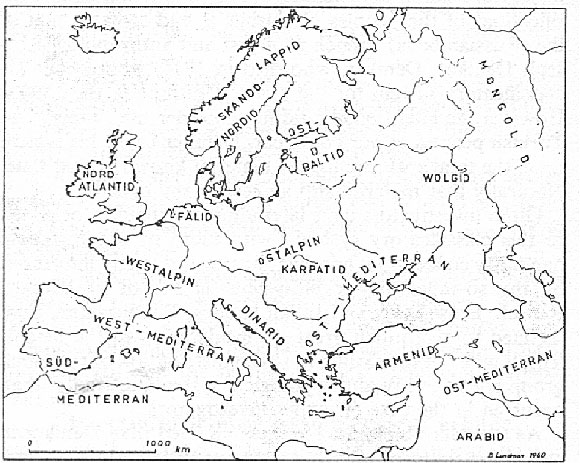
Map 17. The geographical distribution of the races of europe.
The Races of Europe - An Outline
Let us begin with northwestern Europe. Here we encounter the Nordid race or the North-race (the Nordic race of Deniker). The Nordid race is light-eyed, mostly rather light-haired, low-skulled and long-skulled (dolichocephalic), tall and slender, with more or less narrow face and narrow nose, and low frequency of blood type gene q (See Figure 1). The Nordid race has several subraces. The most divergent is the Faelish subrace in western Germany and also in the interior of southwestern Norway. The Faelish subrace is broader of face and form (See Figure 2). So is the North-Atlantid subrace (the North-Occidental race of Deniker), which is like the primary type, but has much darker hair. Above all in the oceanic parts of Great Britain the North-Atlantid subrace is also very high in blood type gene r and low in blood type gene p. The major type with distribution particularly in Scandinavia is here termed the Scandid or Scando-Nordid subrace.
In certain outlying parts of Scandinavia and Ireland, a primitive race - the Palaeo-Atlantid-still lives in small remnants (See Map 18). The Palaeo-Atlantid race is darker than the Nordid race - especially as regards to hair color. It is also coarser than the Faelish subrace, with stronger brow ridges, and a broader, plumper nose. With respect to the ABQ-blood group system, the Palaeo-Atlantid race is high in blood type gene r and low in blood type genes p and q. In the north, this race is named the Tydals race, after a village in central Norway.
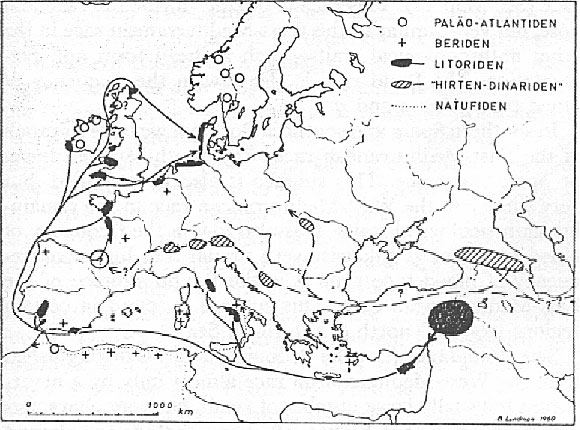
Map 18. Early migrations of the races of europe (Lundman, 1957) (Natufids = Prae-South-Mediterranids)
The short and thickset brunet, Central European population with low and round (brachycephalic) skulls and with round faces belongs to the West-Alpine race (the Occidental race of Deniker). This race is also low in the frequency of blood type gene q. A similar, but high-skulled, type, with a higher frequency of blood type gene q, is found further to the east in Europe. This is the East-Alpine or Gorid race (See Figure 6).
The true West-Mediterranean race (the Ibero-Insular race of Deniker) in southwestern Europe is low-skulled and longskulled (dolichocephalic), dark, short-statured, and gracile in body form (See Figure 3). This race has a narrow face and is low in the frequency of blood type gene q. Within this region, however, there are remnants of the still smaller Berid race (See Map 18). This race is broader-formed in face and nose, but very similar to the West-Mediterranean race in the other anthropological traits - such as head form and pigmentation. The Berid race is also low in the frequency of blood type genes p and q.
In southern Spain and southern Portugal we have a branch of the East-Mediterranean race-the South-Mediterranean or Saharid subrace. This subrace is also high-skulled, but very similar to the West-Mediterranean race in the remaining anthropological traits. It is also low in the frequency of blood type gene q. Likewise very similar, but higher in frequency of blood type gene q, is the Pontid subrace of the East-Mediterranean race. This subrace is found in certain regions west and north of the Black Sea.
The Arabid race (i.e., the Bedouins, et al.) is distinguished from the West-Mediterranean race almost only by a nevertheless unusually large number of small, but very characteristic facial traits (See Figure 10). These include the almond eyes, the "Semitic smile" (conditioned by unusually deep Fossa canina), etc. This race had in earlier times a broader-formed Syrid subrace, which was found among the farmers of the "Fertile Crescent." It is now only typical of the Jews.
The Dinarid race is very tall, dark, high-skulled and round-skulled (brachycephalic), with a very large, long, but also rather broad, face and with a large, more or less bent nose (See Figure 4). This race is low in the frequency of blood type gene q. The Dinarid race probably originated in south-eastern Europe.
The Dinarid race has a very closely-related, somewhat shorter-statured, subrace in southwestern Asia, namely, the Armenid subrace (See Figure 9). The Armenid subrace has higher frequencies of blood type genes p and q. The very much shorter-statured population around the Carpathian mountain region of eastern Central Europe forms a special "hybrid-race" ("Mischrasse") - the Carpathid race (the Litoral race of Deniker). This race, which resembles the east-Alpines in many anthropological traits, has a larger nose. This is due to ancient Armenid strains (which is also the view of Hungarian investigators). The Carpathid race evidently originated from mixtures of Mediterraneans with Armenids.
In eastern Russia we frequently have a very small, dark, high-skulled and also long-skulled (dolichocephalic) race - the Volgid. This race has a broader, somewhat protomorphic face and a smaller, plumper nose. The Volgid race is high in the frequency of blood type gene q. Strains of a similar race are found westward to Bohemia, where it is known as the "Sudeten-race." Moreover, in the Balkans traces of an extraordinary long-skulled (dolichocephalic) race are encountered - the Pre-Pontid type. (These are not Gypsies).
In western and central Russia, northern Poland, and, still stronger, in Estonia and Finland, the East Baltid race is found. The East Baltids are light-blond, high-skulled and round-skulled (brachycephalic), with a broad angular face and a stub-nose (See Figure 5). This race is high in the frequency of blood type gene q. It is polymorphic (vielgestaltig). There are in Finland two subraces of the East Baltid race, a western Tavastid subrace (the Sub-Nordic race of Deniker?) and a more eastern Savolaxid subrace. The latter is smaller and somewhat less brachycephalic than the former, but almost just as blond.
We classify the Scandinavian Lapps as the Scando-Lappid or South-Lappid race (also termed the Samid race). The Scando-Lappids are short-statured, high-skulled and roundskulled (brachycephalic), and broad-faced (See Figure 7). They have a weak lower jaw and are small-nosed. The Scando-Lapps are very low in the frequency of blood type gene q and are also unique in the remaining serological traits. The East-Lapps show, in part, more Mongolid traits. However, the similarity of the two Lapp groups in most anthropological traits is still extensive.
The Mongolid strains in Europe belong mostly to the Kumid subrace of the Altaid race. Some Mongolid elements in northeastern Russia belong to another subrace - the Taigid. The former is very round-headed (brachycephalic), and almost medium tall in stature. The Kumid subrace is very high in the frequency of blood type gene q. The Taigid subrace is more long-skulled (dolichocephalic) and very short in stature. It is somewhat lower in the frequency of blood type gene q. Both Mongolid subraces are thickset, very low-skulled, broad-faced and rather broad-nosed.
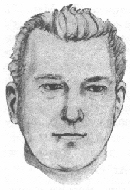
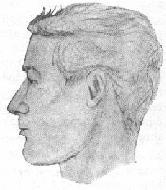
Figure 1
Scando-Nordid Racial Type

Figure 2
Faelish Racial Type

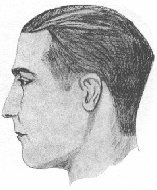
Figure 3
West-Mediterranean Racial Type
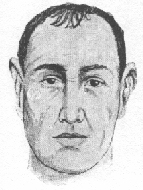
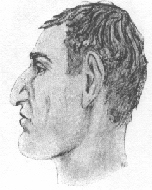
Figure 4
Dinarid Racial Type
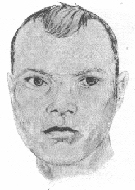
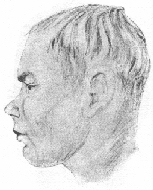
Figure 5
East-Baltid Racial Type
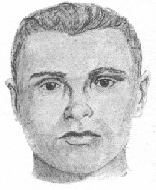
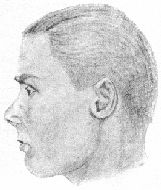
Figure 6
East-Alpine Racial Type
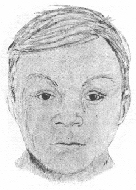
Figure 7
Scando-Lappid Racial Type
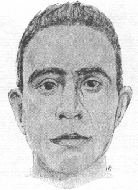
Figure 8
East-Mediterranid Racial Type
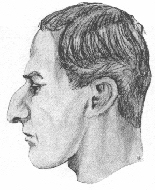
Figure 9
Armenid Racial Type
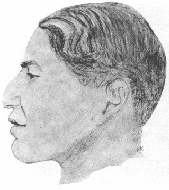
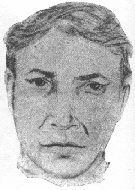
Figure 10
Arabid Racial Type
 Вход
Вход Зарегистрироваться
Зарегистрироваться






 Наверх
Наверх
